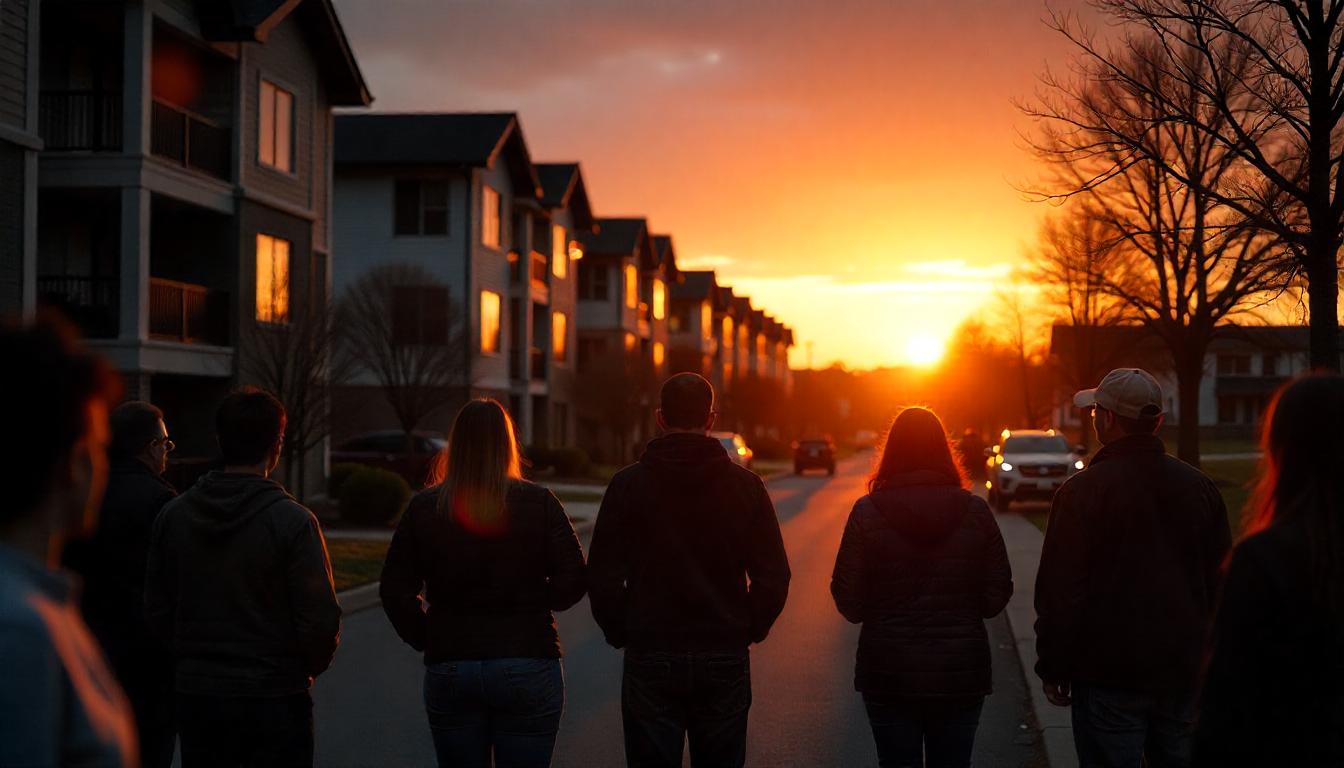WOODRIDGE — A proposed stormwater drainage project at the Woodlake Condominiums has sparked heated debate among residents, pitting environmental concerns against infrastructure demands in this typically quiet condominium community nestled between Oak Hollow and Lake Audubon.
The controversy reached a boiling point at Thursday night’s HOA meeting, where more than 60 residents crowded into the community clubhouse to confront board members and municipal officials about a plan that would remove 14 mature oak and maple trees to install a new drainage system designed to mitigate chronic flooding in Buildings D and E.
The drainage plan, first proposed in late February following two significant basement-flooding events during winter storms, was recommended by the town’s engineering consultant, Kincaid Environmental Services, as “the most feasible long-term solution” to redirecting water away from the foundation.
But for longtime resident and retired teacher Linda Eberly, who has lived at Woodlake for 18 years, the price is too high.
“These trees have stood here longer than most of us,” Eberly said, her voice breaking during the public comment period. “They protect our homes from heat, provide shade for kids playing in the courtyard, and are part of what makes this place feel like a true community. Replacing them with gravel beds and concrete pipes feels like we’re losing a part of ourselves.”
HOA Defends the Plan
Homeowners’ Association President Mark Relson defended the plan as a necessary response to worsening drainage issues exacerbated by record rainfall over the past three years. He emphasized that the board has “no intention of removing trees unless absolutely necessary,” but added that soil analysis and flooding maps show a clear need for deep-trenching along the southern embankment.
“Multiple units have suffered mold damage and insurance claims have skyrocketed,” Relson said. “We are prioritizing safety and structural integrity. We’ve been advised that without a proper sub-drain system, we’re risking long-term damage to the foundations of our buildings.”
Relson also noted that the association has proposed a replanting program to replace lost trees with native saplings after construction is complete—though many residents questioned the efficacy of this promise.
Environmental Impact at Issue
Beyond the aesthetics, environmental concerns were a major theme of the meeting. A petition launched by resident and amateur botanist Javier Sunstrom has garnered 117 signatures, calling for a halt to the project until a third-party ecological impact study can be conducted.
“The wetlands to the east of the complex form a runoff corridor for the entire neighborhood,” Sunstrom explained. “Introducing heavy construction and removing trees could destabilize the soil and create more erosion problems downstream. We’re not anti-repair—we just want it done the right way.”
Town Council representative Margaret LeClaire, who attended the meeting at the request of several residents, said the municipality is monitoring the situation closely but cannot intervene directly unless violations of local ordinances are found.
“The HOA is within its legal rights to carry out approved construction on private property,” LeClaire said. “However, we strongly encourage collaboration with conservation groups and open communication with the community. It’s clear emotions are running high.”
A Divided Community
Tensions ran high throughout the meeting, with audible scoffs, occasional shouting, and at least one resident walking out in frustration. Others voiced support for the board’s position, citing years of ignored maintenance needs and rising costs for flood repairs.
“I love trees too, but I also don’t want black mold in my guest room again,” said newer resident Kayla Boudreaux, who moved into the complex in 2022. “We can’t ignore the damage just because the solution is unpopular.”
At the close of the meeting, the HOA announced the formation of a temporary “Drainage Oversight Committee,” comprising five residents and two board members, to liaise with contractors and explore possible project modifications. The first committee session is scheduled for May 10.
In the meantime, orange surveyor’s tape continues to mark the endangered trees, and residents remain deeply divided.
“Woodlake used to be the kind of place where neighbors barbecued together and looked out for one another,” Eberly said as she left the clubhouse. “Now it feels like we’re fighting for the soul of the community.”
Sidebar: Timeline of Events
- February 12: Record rainfall causes basement flooding in Buildings D and E.
- March 3: HOA commissions drainage assessment from Kincaid Environmental Services.
- March 29: Preliminary plan presented to residents.
- April 15: Petition launched by residents opposing tree removal.
- May 1: Public HOA meeting draws over 60 attendees.
- May 10: Drainage Oversight Committee to meet for first time.


